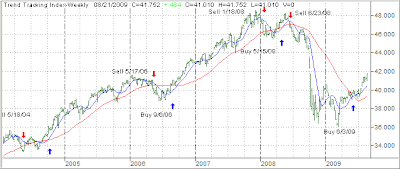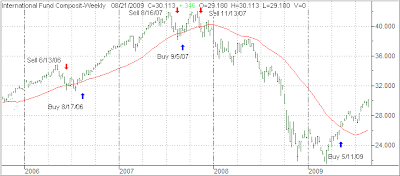 The WSJ reports that “Bond ETFs Draw A Surge Of Funds:”
The WSJ reports that “Bond ETFs Draw A Surge Of Funds:”
Investors burned by the stock-market meltdown are piling into bond exchange-traded funds in an effort to tone down risk and generate stable income.
In particular, ETFs tracking inflation-protected bonds and corporate debt have seen cash fly in the door this year, which reflects the trend of more investors using bond ETFs to manage the fixed-income side of their portfolios, industry insiders say.
…
“Now ETFs are giving investors precise, liquid and low-cost exposure to the bond market,” Mr. Tucker said. “This opens up the door for investors to do asset-allocation and sector-rotation strategies with fixed-income ETFs.”
At the end of June, there were 740 ETFs listed in the U.S. with total assets of nearly $600 billion, according to State Street Global Advisors. Bond ETFs accounted for only 63 funds and $78 billion, but the fixed-income portion of the business is expected to expand in coming years with bond giant Allianz’s Pacific Investment Management Co. and others entering the fray.
Investors have been pumping money into corporate-bond ETFs this year amid a solid rally in this beaten-down corner of the debt market.
Through the end of June, the two best-selling ETFs in 2009 in the iShares lineup tracked bonds. One of these was iShares iBoxx $ Investment Grade Corporate Bond Fund (trading symbol: LQD), with inflows, or net buying, of nearly $5 billion. The fund had total assets of $12.7 billion as of Aug. 6 and was the fourth-largest iShares ETF.
…
“The Federal Reserve has lowered rates and become much more aggressive in battling the financial crisis,” Mr. Tucker said. “Spreads have tightened, and we’ve seen some incredible rallies in corporate bonds since March.”
The bond strategist said the move has been driven by signs of stabilization in the U.S. economy, which should result in better profits for companies and allow them to service their debt. However, there could be declining demand for corporate bonds given how well they have already performed this year.
ETFs tracking high-yield corporate bonds, or “junk,” such as (HYG) and SPDR Barclays Capital High Yield Bond ETF (JNK) have performed even better. Through Aug. 6, the funds had risen 16.8% and 22.6% for the year-to-date period, respectively, according to investment researcher Morningstar Inc.
…
Mr. Tucker said assets and trading volume in the high-yield ETF have “exploded” in the past year. It currently holds nearly $4 billion in its coffers and is yielding about 10%, according to Barclays. Bond yields and prices move in opposite directions.
“The market has repriced credit risk since the panic at the end of 2008. As the economy recovers, corporate default expectations fall back,” Mr. Tucker said.
Investors also have been plowing into ETFs indexed to Treasury Inflation-Protected Securities, or TIPS, on fears that loose monetary policy and unprecedented government spending will ultimately push up inflation.
Assets in iShares Barclays TIPS Bond Fund (TIP) have nearly doubled in 2009 to $14.7 billion. And the fund was up 3% so far this year through Aug. 6, according to Morningstar.
“Investors are looking for some way to protect against inflation,” Mr. Tucker said. “ETFs provide pure, diversified exposure to the TIPS market.”
The reason for pointing to this story is that we are continuing to live in a highly volatile investment environment. As last year has shown, many of these ETFs mentioned in the story took quite a beating. Not as bad as the S&P; 500, but enough to wipe out the dividends received and then some.
If you are investing in any of these instruments, you are well advised to treat them no different than equity ETFs by using a trailing sell stop and actually executing it when it gets triggered.
Unfortunately, an investment that can be held without worry that the principal will not be adversely affected at one time or another does not exist.






